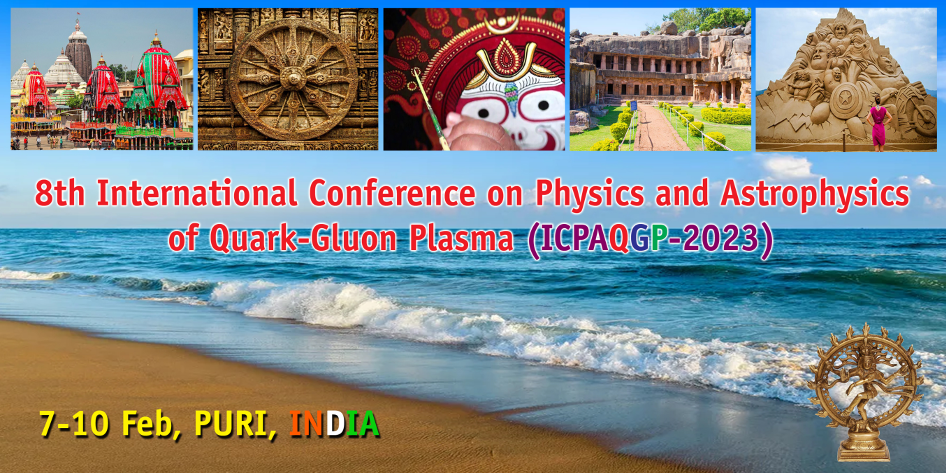Speaker
Description
We have studied the momentum transport coefficients, viz. shear and bulk viscosity, in a weakly magnetized ($eB\ll T^2$) deconfined thermal QCD medium at finite quark chemical potential ($\mu$). The magnetic field generates anisotropy in the medium, causing the previously isotropic scalar transport coefficients to become anisotropic and separate into several components. Depending upon the direction of the magnetic field and current, we can have three possible components, namely, longitudinal, transverse, and Hall.
We have obtained five shear ($\eta_0,\eta_1,\eta_2,\eta_3$ and $\eta_4$) and two bulk viscous components ($\zeta_0$ and $\zeta_1$) using relativistic Boltzmann transport equation under relaxation time approximation. Interaction among partons is incorporated through the quasiparticle mass of quarks and gluons ($T$, $\mu$, $B$ dependent), calculated using one-loop perturbative thermal QCD.
It is observed that the magnetic field acts differently on left (L) and right (R)-handed chiral modes of quark. This leads to the lifting of degeneracy in mass of those modes, in contrast to the strong magnetic field case ($eB>>T^2$), where the modes are degenerate. The magnetic field dependence of L and R modes of $\eta_0, \eta_1$ and $\eta_3$ is opposite in nature, viz. the L mode magnitude decreases whereas the R mode magnitude increases, with the magnetic field. This is in contrast to $\eta_2$ and $\eta_4$, for which, both the L and R mode magnitudes increase with the magnetic field. The L modes of both $\zeta_0$ and $\zeta_1$ show an increment with magnetic field for the entire temperature range. For the R mode, up to $T \sim 0.35 \mathrm{GeV}$, the magnitude at $e B=0.2 m_\pi^2$ is greater than at $e B=0.1 m_\pi^2$; beyond $T \sim 0.35 \mathrm{GeV}$, the magnitude at $e B=0.1 m_\pi^2$ becomes greater than that at $e B=0.2 m_\pi^2$. Also, these shear and bulk viscosities get amplified with quark chemical potential for both modes. Additionally, we have also examined the effects of
the magnetic field on specific shear and bulk viscosities, Prandtl number, and Reynolds number for L and R modes over a given temperature range.

